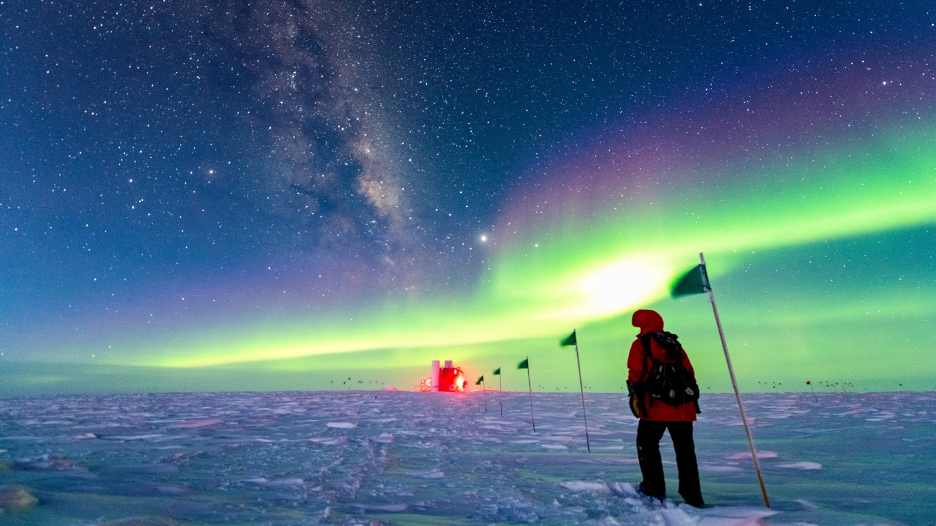Former winterover Yuya Makino was recently awarded First Prize in the “At a Glance” category for The International Union of Pure and Applied Physics (IUPAP) 100 photo contest for his entry titled “Chasing Ghost Particles at the South Pole.” The IUPAP 100 photo contest celebrates the beauty of physics and the fun that can be encountered in its practice.
As a winterover, individuals brave the harsh environment to spend a year at the South Pole, half of which is enveloped in complete darkness. Every year, two winterovers are selected and sent to the South Pole to operate and maintain the IceCube detector. Makino, who currently works at the Wisconsin IceCube Particle Astrophysics Center (WIPAC), was a winterover during the 2019-2020 season along with John Hardin, a postdoctoral associate at the Massachusetts Institute of Technology. Little did he know that a photo taken on the way to the IceCube Laboratory (ICL) for routine maintenance would captivate so many.

“Chasing Ghost Particles at the South Pole” showcases the aurora australis during one of the largest aurora storms of the season that year, along with a striking night sky that includes the galactic plane and the Milky Way. Makino can also be seen in the image standing next to a flag line, which winterovers rely on in the dark months to find their way to the ICL and back to the station. The edges of the IceCube array, which comprises 5,160 digital optical modules arranged in a cubic kilometer of Antarctic ice, extend beyond the frame of the photo.
“It took more time than usual to get to the ICL that day because I stopped several times to look up at the sky and think how lucky I am to be here,” Makino reflected. “I hope this picture shows everyone our exciting work at the bottom of the Earth.”
As a first prize winner, Makino will receive a monetary award of €2000, with his entry also selected for exhibition at UNESCO headquarters in Paris, France, on July 8th for the opening ceremony of the International Year of Basic Sciences for Sustainable Development. His entry will also be showcased on July 13th during the IUPAP 100 symposium alongside the other winning entries. The symposium will be hosted by the Abdus Salam International Centre for Theoretical Physics and held in Trieste, Italy, on July 11-13 in celebration of IUPAP’s centennial.
The IUPAP, established in 1922 in Brussels, Belgium, is the only international physics organization that is organized and run by the physics community. Its members, currently at 60, are identified physics communities in countries or regions around the world.